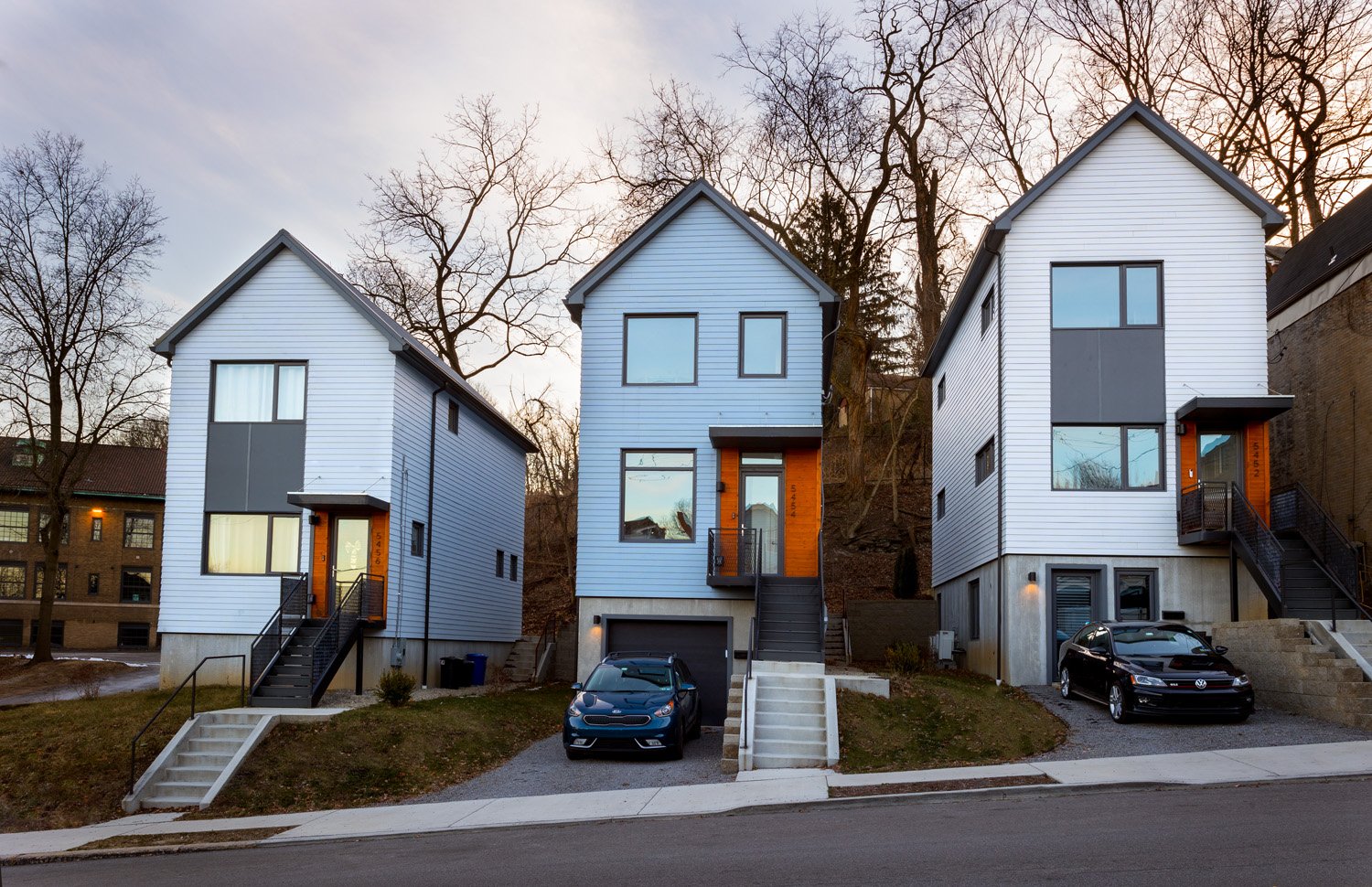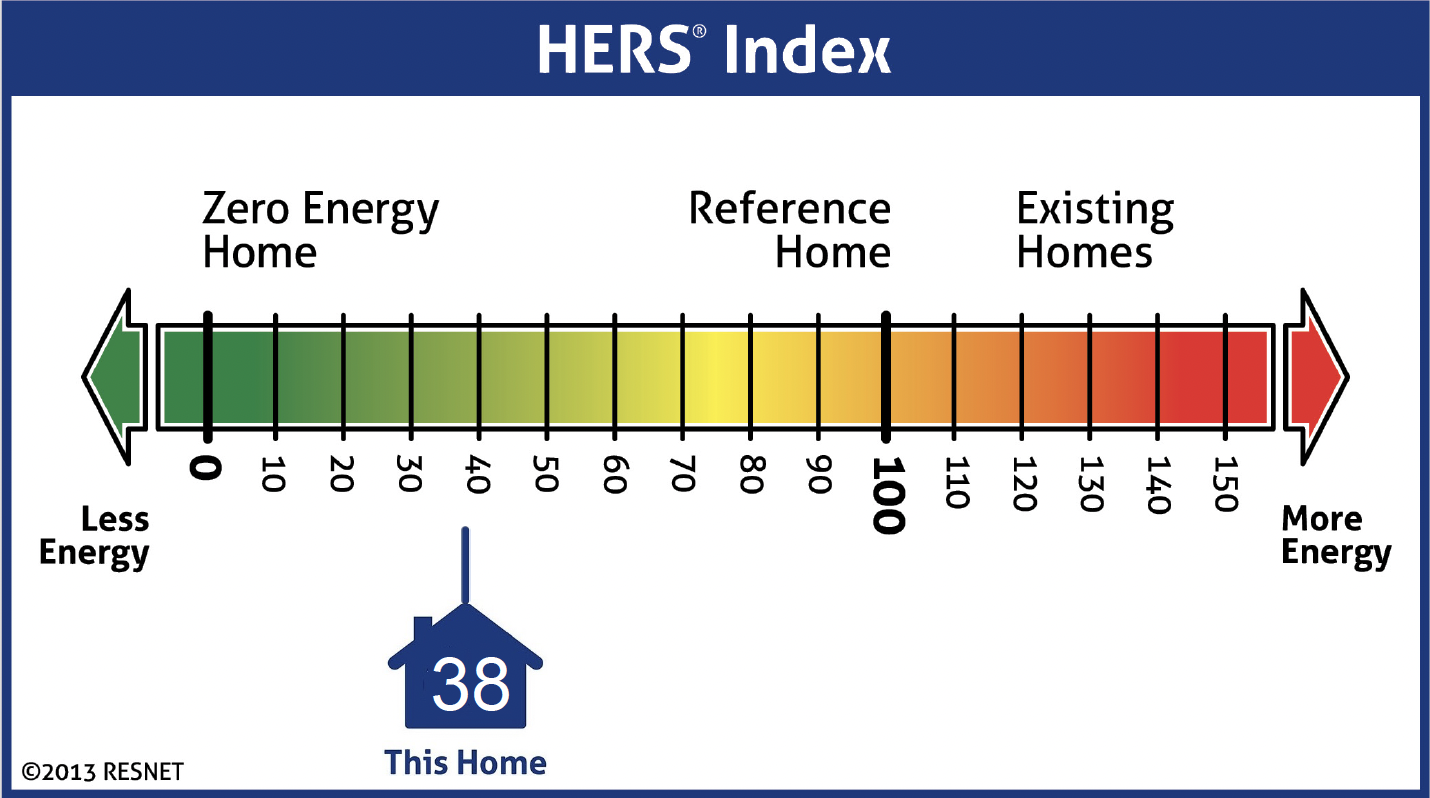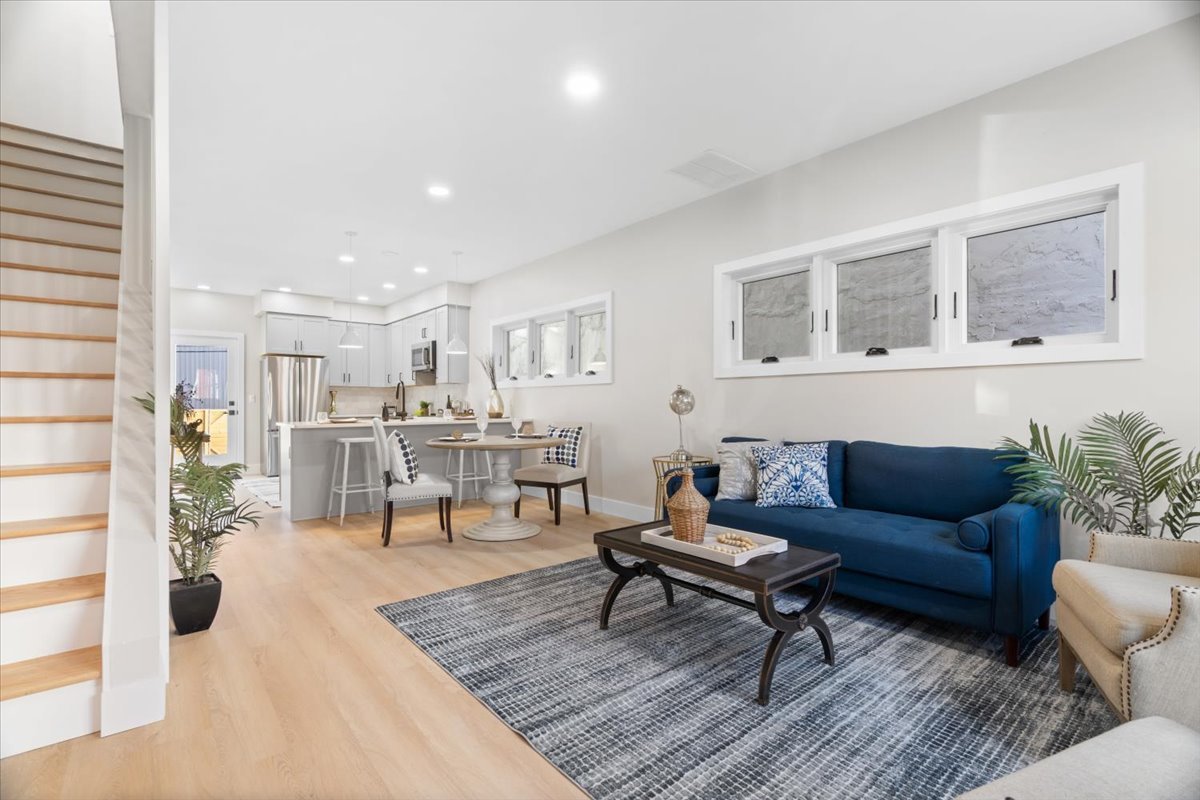Energy Efficiency: A Higher Standard
Module Homes are built to a higher specification and design quality than the average modular home, with a strong focus on energy efficiency, durability, and long-term affordability. We strive to keep operating costs low because utility bills play a significant role in determining the affordability of a home. Over the last few years, we have tailored the Module spec to balance the upfront costs of energy-efficient upgrades with long-term operating costs.
As a certified Zero Energy Ready Homebuilder with the Department of Energy, Module consistently builds homes that have achieved both Energy Star Certification and Zero Energy Ready Certification. Our homes meet Indoor airPLUS construction specifications as established by the U.S. Environmental Protection Agency, contributing to improved air quality and health outcomes for homeowners.
Making these initial investments into the construction of a new home pays off. We proved this through our Black Street Development where we have a happy homeowner living in an all-electric home with a $100 electric bill in the middle of a Pittsburgh winter.
Economic Benefits of Sustainably Built Homes
At a HERS Index rating of 38, Module’s homes are up to 70% more efficient than the average new home, saving the homeowner $1,100 per year, and $33,000 over the life of a 30-year mortgage.
ZERH-certified homes qualify for a $5,000 rebate and Energy Star Homes qualify for a $2,500 rebate under the 45L Tax credit. These incentives can support the upfront investment. Additionally, our homes, WaterSense certified, save 24,000 gallons of water a year (for a family of four), amounting to $180/year in savings. WaterSense upgrades pay for themselves in 3 years.
Boyle Street, Two Energy Star Certified Homes
In 2024, Module certified 5 homes as Energy Star. By following the U.S. EPA's Indoor airPLUS construction standards, our homes ensure better indoor air quality with features like:
Moisture and mold control
Radon-resistant construction
Pest barriers
Efficient HVAC systems and safe combustion practices
Healthier building materials
Module homes are all electric and leverage cutting-edge HVAC technology. An energy recovery ventilator (ERV) acts as the lungs of the home. By transferring heat energy between incoming and outgoing airstreams, the ERV not only maintains a fresh and healthy indoor environment but also optimizes HVAC efficiency, leading to lower energy costs and a reduced carbon footprint.
The HVAC system utilizes smaller, more efficient ducts (Unico system) to keep the air flowing and comfortable throughout the home. This means lower energy bills and a healthier, more comfortable living space for the occupant.
The Home Energy Rating System
The Home Energy Rating System (HERS) Index, a nationally recognized system, is the industry standard for measuring a home’s energy efficiency. A HERS Index Score can provide indicators on how well a home is performing and can help anticipate energy usage and utility costs. The U.S. Department of Energy predicts that a typical, existing home scores about 130 on the HERS Index. A typical, new construction home scores a rating of 100. Lower HERS Index ratings equate to a home that uses less energy, 0 being the rating for a Zero Energy, or Net Zero, home.
Module homes have HERS Index Ratings as low as 38.
That's up to 70% more efficient than a standard new home.
Value Adds
HERS Index scores help homebuyers make informed decisions about purchasing an energy-efficient home.
Studies have found that homes with lower HERS Index scores have higher appraised values - up to 10% more than average homes.
A joint report by the University of North Carolina’s Center for Community Capital, and the Institute for Market Transformation (IMT) states that mortgage default risks are 32% lower on Energy Star labeled homes with lower HERS Index scores.
Interior of Boyle Street, An Energy Star Certified Home
Energy Star
Module homes meet the rigorous energy efficiency requirements for EnergyStar Certification. Program requirements include the following considerations:
Thermal Enclosure System: Comprehensive air sealing (air infiltration tested), quality-installed insulation, and high-performance doors & windows.
Water Management System: Protects roofs, walls, and foundations. Flashing, drainage plane, and site grading. Water resistant materials below grade. Moisture management during construction.
High Efficiency HVAC System: Designed and installed for optimal performance.
Module provides two different system options:
High Velocity, Small Duct
Significantly Reduced Duct Leakage
7.2 HSPF, 14 SEER
Ductless Mini-Splits
Eliminates Duct Leakage
15.5 HSPF, 33 SEER
Energy Efficient Lighting, Appliances & Equipment: Helps reduce utility costs and provide high-quality performance
Cost vs Value
According to a 2018 case study by the EPA; a 2-story, 3 bedroom, 2,400 SF EnergyStar Certified home in Climate Zone 5 (when compared to a 2009 IECC Home) is $2,009 more expensive to build and saves $772 a year on energy costs.
A study in MD attributed a $10,000-$25,000 price premium to EnergyStar Certified new homes.
Research by the North Carolina Energy Efficiency Alliance shows that, on average, EnergyStar homes sell 89 days faster than traditional homes.
Zero Energy Ready Home
The DOE’s Zero Energy Ready Home (ZERH)
Module follows the requirements of the Zero Energy Ready Home (ZERH) program. The standard, developed by the Department of Energy, builds upon the EnergyStar requirements to ensure an even higher level of performance and provides the opportunity to create a Zero Energy home (a home that produces as much energy as it uses). At a minimum, certified Zero Energy Ready Homes are 40-50% more energy efficient than a typical new home. ZERH homes are also built to ensure residents’ long-term health and comfort.
DOE Zero Energy Ready Home Requirements
Comply with EnergyStar
Thermal Enclosure
Quality HVAC Installation
Water Management
EnergyStar Lighting, Appliances & Equipment
High Performance Windows & Doors
Meet 2015 IECC levels for insulation
Install ducts in conditioned space / optimized location
Conserve water and energy though a high-efficiency water heater & WaterSense labeled fixtures
Provide comprehensive indoor air quality through EPA’s Indoor AirPlus program
Follow the PV-Ready Checklist to enable a future system installation
Cost vs Value
A Certified ZERH estimates an average energy savings of 6,800kWh per year. That’s almost $28,000 over a 30-year period.
A WaterSense certified home saves 24,000 gallons of water a year (for a family of four) amounting to $180/year in savings. WaterSense upgrades pay for themselves in 3 years.
A Higher Quality
Additional Upgrades for Comfort, Performance & Durability
Continuous Exterior Insulation
A building envelope that includes a layer of continuous exterior insulation is more tightly sealed against air leakage, has reduced heat loss through thermal bridging and reduced condensation within the wall assembly. Better efficiency
and better air quality, happier homeowner.
Energy Recovery Ventilator (ERV)
Module homes rely on ERVs to provide a constant cycling of fresh, filtered air into the home while also balancing humidity levels. Controlling ventilation with this type of mechanical equipment ensures that energy is not lost and that indoor air quality is superb.
All-Electric Home
Module homes are all-electric (no natural gas utility). This is a big step toward future proofing Module homes, improving indoor air quality (by eliminating combustion), and making it even easier to achieve net zero status.
Hybrid Electric Hot Water Heater
The most advanced hot water heaters available - 4x more efficient than a standard electric tank. They utilize a heat pump to preheat water with ambient conditioned air.
Fiber Cement or Engineered Wood Siding
Made from recyclable materials. Durable and very low maintenance. Warranties are 30-50 years. These siding options are more durable, UV stable, and environmentally friendly than vinyl siding.
Architectural Shingle or Metal Panel Roofing
Replacing a roof is one of the most expensive home improvement projects. For this reason, we know that homeowners value long lasting roofing materials. Higher quality architectural shingles are more durable and last longer. Metal panel roofing is very low maintenance and extremely durable. Most metal roofs come with a 50 year warranty, but can last up to 75 years.
Partnering with Module
Partnering with Module means delivering energy-efficient homes, healthier environments for residents, and smarter, more sustainable designs that align with the future of housing.
Are you a developer interested in working with Module?







